
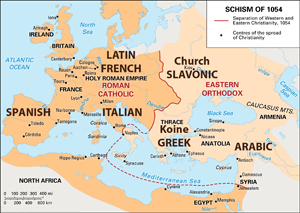
The Great Schism is also referred to at the East-West Schism and although the date given for the schism is 1054, there had been a lot of tension between the two sides for a long time before this date. The Roman Empire had become so large that it was difficult to govern it as a whole. In 285, the Roman Emperor Diocletian divided the empire into two parts: The Western Roman Empire Eastern Roman Empire (the Byzantine Empire). Both halves of the empire worked together but slowly the two halves moved apart. By the beginning of the sixth century, the Western Roman Empire was being overrun by the barbarians while the Eastern Roman Empire continued to do well. Language also caused the two halves to slowly drift apart. The main language in the West was Latin but the main language in the East was Greek. The number of people who spoke both languages decreased as did communication between the two halves. As a result of these differences, the two parts of the Church began to separate. They started to have different views regarding religious doctrine and also used different rites. These two sections were to turn into the Roman Catholic Church and the Eastern Orthodox Church
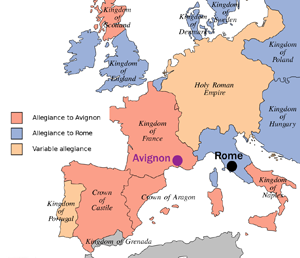
From 1309 to 1377, the seat of the papacy resided in Avignon, France, rather than Rome. Gregory XI returned to Rome in 1377, thus ending the Avignon Papacy, at which point Romans rioted to ensure the election of a Roman for Pope. Urban VI was elected in 1378. Urban VI proved to be so hostile to the cardinals they as a result retired to Anagni and elected one of themselves, Robert of Geneva, as Clement VII, claiming the election of Urban VI had been invalid because it was made under fear. Clement VII then took up residence at Avignon. The spectacle of rival popes denouncing each other produced great confusion and resulted in a tremendous loss of prestige for the papacy. The conflict was finally resolved by a council convened by a third Pisan pope, John XXIII, in 1414. So at one time there were three popes…and they all excommunicated each other
Religious movements now grow across Europe, like the Waldenses, the Lollards and others will follow.
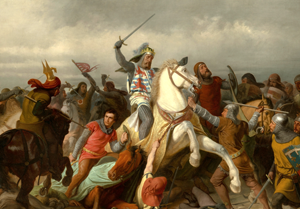
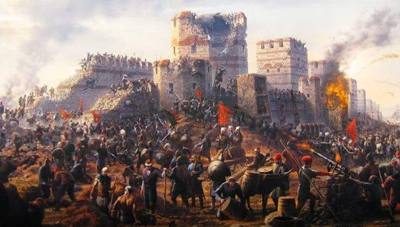 Fall of Constantinople 1453 C.E.
Fall of Constantinople 1453 C.E.
Turks invade Constantinople, where Emperor Constantine had 1100 years earlier moved his capital to. In those 1100 years, Greek learning had disappeared from western Europe. But with the invasion of Constantinople, Greek scholars took their manuscripts many of the Bible and fled into Europe. Pope Pius II believed that the Ottomans would persecute Greek Orthodox Christians and advocated for another crusade at the Council of Mantua in 1459. However, Vlad the Impaler was the only Christian ruler who showed enthusiasm for this suggestion. By 1500 there was a Greek-speaking community of about 5,000 in Venice. Greek Biblical manuscripts were studied, also the philosophy of not only Aristotle but also Plato affected the Renaissance by causing debates over man's place in the universe, the immortality of the soul. Five years later, Greek is offered for the first time at a European university. The Reformation and Renaissance would be born as a result of the rediscovery of classical Greek and of the Greek New Testament.
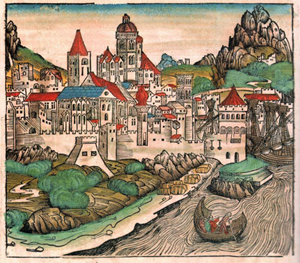 Mainz 1462 C.E
Mainz 1462 C.E
In 1462 Mainz was involved in a war between two men who both wanted to be archbishop of Mainz. The man imposed by the pope and supported by France won the war, in the face of opposition from the burghers of Mainz. The punishment of those who had supported the losing side was severe. All their property was confiscated and they were sent into exile. A feud between Archbishop Adolf II von Nassau,named archbishop for Mainz by the Pope, and Archbishop Diether von Isenburg, who was supported by the people, caused Adolf II to send troops to raid the city of Mainz on October 27, 1462, plundering and killing 400 inhabitants. At a tribunal that followed, those who survived lost all their property, which was then divided among those who promised to follow Adolf II. Those who did not promise to follow Adolf II (among them printer Johannes Gutenberg) were driven out of the city or thrown into prison. The new Archbishop denied Mainz its town rights and made the city an archepiscopal capital. This debacle stopped printing in Mainz for the next few years and contributed to the spread of printing: It wiped out commerce there, and the consequent lack of money led printers, who were established in a kind of industrial group, to scatter widely. This accounts for the German names we find among the earliest printers in other countries throughout Europe. Those who did not promise to follow the Pope's man among them printer Johannes Gutenberg were driven out of the city or thrown into prison.
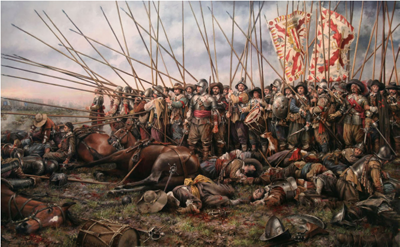 Battle of Rocroi, 1643
Battle of Rocroi, 1643